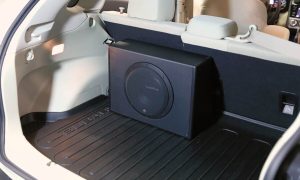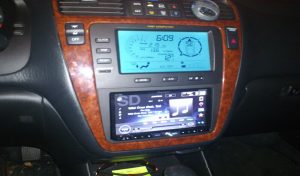Car audio enthusiasts often face a critical decision when upgrading their sound system: should you run your amplifier in bridged or unbridged mode? This choice impacts sound quality, power output, and system longevity. Understanding the differences between bridged and unbridged amplifiers helps you craft a car stereo setup that delivers booming bass, crisp highs, and an immersive listening experience. Let’s dive into the details of bridged vs unbridged amps, explore their pros and cons, and guide you toward the best option for your car audio goals.
Contents
- What Is a Car Amplifier?
- Unbridged Amplifiers: The Basics
- Bridged Amplifiers: Power and Performance
- Key Factors to Consider When Choosing Bridged vs Unbridged
- Bridged vs Unbridged: Real-World Applications
- Tips for Optimizing Your Amplifier Setup
- Common Myths About Bridged and Unbridged Amplifiers
- Bridged vs Unbridged: Which Is Right for You?
- Final Thoughts
What Is a Car Amplifier?
Before comparing bridged and unbridged setups, let’s clarify what a car amplifier does. An amplifier boosts the audio signal from your head unit (stereo) to drive speakers or subwoofers. It takes a weak electrical signal and amplifies it, producing louder, clearer sound. Amplifiers come in various classes (like Class A, B, AB, or D) and channel configurations (mono, 2-channel, 4-channel, etc.), each suited for specific audio needs.
In a car stereo system, amplifiers power speakers for mids and highs or subwoofers for deep bass. The way you configure the amp—bridged or unbridged—affects how much power it delivers and how it interacts with your speakers. Now, let’s break down the two modes.
Unbridged Amplifiers: The Basics
In unbridged mode, each channel of the amplifier powers a single speaker or subwoofer. For example, a 4-channel amplifier in unbridged mode drives four speakers, with each channel handling one speaker. This setup is straightforward and common in standard car audio systems.
How Unbridged Mode Works
Each channel operates independently, delivering power to its assigned speaker. The amplifier splits its total power output evenly across all channels. For instance, a 4-channel amp rated at 50 watts per channel (WPC) at 4 ohms provides 50 watts to each speaker. This configuration suits systems with multiple speakers, like front and rear door speakers, tweeters, or a combination of mids and highs.
Benefits of Unbridged Amplifiers
Unbridged setups shine in specific scenarios. Here are the key advantages:
- Flexibility: You can power multiple speakers, making it ideal for full-range audio systems with front, rear, and even center-channel speakers.
- Simplicity: Wiring is straightforward, as each speaker connects to its own channel. This reduces complexity during installation.
- Lower Heat Output: Since the amp distributes power evenly, it runs cooler compared to bridged mode, which can extend the amplifier’s lifespan.
- Compatibility: Unbridged mode works well with a wide range of speakers and impedances (e.g., 4 ohms or 8 ohms), offering versatility for different setups.
Drawbacks of Unbridged Amplifiers
While unbridged mode is versatile, it has limitations:
- Lower Power Output: Each channel delivers less power compared to bridged mode, which may not suffice for power-hungry subwoofers or high-performance speakers.
- Limited Bass Performance: If you crave deep, thunderous bass, unbridged mode might not provide enough juice to drive large subwoofers effectively.
Unbridged amplifiers suit drivers who prioritize balanced sound across multiple speakers without focusing heavily on bass. If you’re building a system for casual listening or mids and highs, unbridged mode offers a solid foundation.
Bridged Amplifiers: Power and Performance
Bridging an amplifier combines two channels to act as a single, more powerful channel. This setup is common for driving subwoofers or high-power speakers that demand more wattage. By merging channels, the amplifier delivers a higher voltage output, resulting in increased power to the connected speaker.
How Bridged Mode Works
In bridged mode, the amplifier uses the positive terminal of one channel and the negative terminal of another to create a single, high-power output. For example, a 4-channel amp can be bridged to produce two high-power channels instead of four standard ones. If the same 4-channel amp rated at 50 WPC at 4 ohms is bridged, it might deliver 150–200 watts per bridged channel, depending on the amp’s design and impedance.
Benefits of Bridged Amplifiers
Bridged mode is a game-changer for bass lovers and audiophiles chasing raw power. Here’s why:
- Higher Power Output: Bridging significantly boosts wattage, making it perfect for driving subwoofers or power-hungry component speakers.
- Enhanced Bass Response: The increased power drives larger subwoofers, delivering deep, punchy bass that fills your car.
- Fewer Channels Needed: You can achieve high power with fewer channels, potentially reducing the need for multiple amplifiers.
- Efficient Use of Equipment: Bridging maximizes the potential of your existing amp, saving you from buying a more powerful unit.
Drawbacks of Bridged Amplifiers
Bridging isn’t without trade-offs. Consider these challenges:
- Increased Heat: Bridged mode pushes the amplifier harder, generating more heat. Without proper ventilation, this can lead to overheating or reduced lifespan.
- Reduced Channel Count: Bridging halves the number of available channels. A 4-channel amp becomes a 2-channel amp, limiting the number of speakers you can power.
- Impedance Sensitivity: Bridged amps often require lower impedance (e.g., 2 ohms or 4 ohms) to operate safely. Mismatched impedance can damage the amp or speakers.
- Complex Wiring: Bridging requires precise wiring to avoid short circuits or improper connections, which can be tricky for beginners.
Bridged amplifiers excel in systems focused on bass or high-output speakers. If you want earth-shaking subwoofer performance or to power premium component speakers, bridging is often the way to go.
Key Factors to Consider When Choosing Bridged vs Unbridged
Selecting between bridged and unbridged modes depends on your audio goals, equipment, and vehicle. Let’s explore the critical factors to guide your decision.
1. Speaker Requirements
Check the power handling (RMS rating) and impedance of your speakers or subwoofers. Subwoofers typically need 200–1000 watts RMS to perform at their best, making bridged mode a better fit. Full-range speakers, like 6.5-inch door speakers, often require 50–100 watts RMS, which unbridged mode can handle efficiently.
2. Amplifier Specifications
Review your amplifier’s manual to confirm its bridging capabilities and power output in both modes. Some amps are designed for bridging, while others may not support it or may become unstable at low impedances. Ensure the amp’s bridged output matches your speakers’ power requirements.
3. System Goals
Define your audio priorities. Do you want a balanced system with clear vocals and mids across multiple speakers? Unbridged mode is likely your best bet. Craving bone-rattling bass for hip-hop or EDM? Bridged mode will power your subwoofers to their full potential.
4. Vehicle Constraints
Consider your car’s electrical system and space. Bridged amps draw more current, which may strain your alternator or battery. Ensure your vehicle has a high-output alternator or add a capacitor to stabilize power delivery. Also, bridged setups may require larger amps, so verify you have enough trunk or under-seat space.
5. Budget
Bridged setups often maximize your current amp’s power, saving you from buying a new one. However, if your amp isn’t bridgeable or can’t handle low impedance, you may need to upgrade. Unbridged systems are typically cheaper to set up since they require less power and simpler wiring.
6. Installation Expertise
Bridging demands precise wiring and impedance matching to avoid damage. If you’re a DIY novice, unbridged mode is easier to install. For complex bridged setups, consider hiring a professional installer to ensure safety and performance.
Bridged vs Unbridged: Real-World Applications
To illustrate the differences, let’s look at two common car audio setups.
Scenario 1: Balanced Full-Range System
You want clear mids, crisp highs, and moderate bass in a sedan with four door speakers. A 4-channel amplifier rated at 75 WPC at 4 ohms powers each speaker in unbridged mode. This setup delivers balanced sound for pop, rock, or podcasts without overwhelming your car’s electrical system. Unbridged mode shines here for its simplicity and ability to power multiple speakers.
Scenario 2: Bass-Heavy Subwoofer System
You’re building a system for bass-heavy genres like rap or electronic music. You have a 12-inch subwoofer rated at 500 watts RMS and a 4-channel amp. By bridging two channels, the amp delivers 250 watts per bridged channel at 4 ohms, powering the subwoofer with 500 watts total. Bridged mode maximizes bass output, creating a thumping low-end experience.
Tips for Optimizing Your Amplifier Setup
Whether you choose bridged or unbridged, these tips enhance your car audio performance:
- Match Impedance: Ensure your speakers’ impedance aligns with your amp’s capabilities in either mode. Most amps handle 4 ohms in unbridged mode, but bridged mode may require 2 or 4 ohms.
- Use Quality Wiring: Invest in high-gauge power and ground cables to reduce resistance and ensure stable power delivery.
- Tune Your Amp: Adjust gain, crossover, and bass boost settings to match your speakers and listening preferences. Proper tuning prevents distortion and protects equipment.
- Ventilate Your Amp: Mount the amplifier in a well-ventilated area to dissipate heat, especially in bridged mode.
- Test Your System: After installation, play various music genres to check for clarity, balance, and distortion. Fine-tune as needed.
Common Myths About Bridged and Unbridged Amplifiers
Let’s debunk some misconceptions to clarify your decision:
- Myth: Bridging always improves sound quality.
Truth: Bridging increases power but doesn’t inherently improve clarity. Sound quality depends on speaker quality, tuning, and source material. - Myth: Unbridged mode is outdated.
Truth: Unbridged mode remains relevant for balanced systems and is often more efficient for multi-speaker setups. - Myth: Bridging damages amplifiers.
Truth: Bridging is safe if done correctly with compatible equipment and proper impedance matching.
Bridged vs Unbridged: Which Is Right for You?
The choice between bridged and unbridged amplifiers boils down to your audio goals and system requirements. If you seek a versatile, easy-to-install system with clear sound across multiple speakers, unbridged mode is ideal. It suits casual listeners or those prioritizing mids and highs. On the other hand, if you’re chasing powerful bass or need to drive high-performance speakers, bridged mode delivers the extra wattage required. It’s perfect for bass enthusiasts or audiophiles with subwoofer-heavy setups.
Before deciding, assess your speakers’ power needs, your amplifier’s capabilities, and your vehicle’s electrical capacity. Consult your amp’s manual to confirm bridging options and impedance ratings. If you’re unsure, start with unbridged mode for simplicity and upgrade to bridged mode as your audio ambitions grow.
Final Thoughts
Bridged and unbridged amplifiers each offer unique strengths for car audio systems. Unbridged mode provides flexibility and ease for balanced setups, while bridged mode unleashes raw power for bass-driven systems. By understanding your speakers, amplifier, and listening preferences, you can choose the setup that transforms your car into a rolling concert hall. Whether you’re cruising to classic rock or thumping to trap beats, the right amplifier configuration elevates your driving experience.






